Everyone who owns an old house needs to know how to restore old windows. There are lots of them and they usually need a lot of work, but with the tutorials, tools, and supplies on this page, you can learn how to restore old windows like a pro, from a pro.
Your home’s old wood windows are some of the most valuable, yet misunderstood elements of a historic house. Most people find them painted shut with sash cords cut, and with missing bits and pieces of hardware. That’s the time they usually opt to start over with replacement windows.
But replacing historic windows is a big mistake and I don’t want you fall into it!
Reasons people choose to replace old windows:
- Inoperable windows
- Leaky and energy-inefficient windows
- Lead paint concerns
- Aggressive marketing from window companies
All these problems can be easily solved and you can make your historic windows just as efficient as a new window, but much longer lasting!
The Facts About Historic Windows
1. Repairable – Historic wood windows are designed to be easy to repair. Unlike replacement windows where the whole window unit must often be replaced or factory repaired if an issue arises, historic windows can be repaired piecemeal. Each individual piece can be repaired, restored, or replaced quite simply by the homeowner or local tradesman.
2. Upgradable – Your old windows may be drafty but they can very easily be weatherstripped and have storm windows (interior or exterior) added to dramatically increase their efficiency beyond even what new replacement windows can offer.
3. Simple to Maintain – Keep your old windows painted. That’s it! With some paint every decade or so, you can keep them protected and safe for decades longer than a replacement window will last.
4. Resilient – Being made from old-growth lumber, these windows (when properly maintained) can last for several centuries unlike replacement windows today which are obsolete within just a few years.
Now that you know the facts, you’ll want to know the how and what of repairing these old windows. So below I have included links to posts that detail exactly how to restore and care for these windows. I’ve also included links to where you can find the proper tools and products to use in the restoration process.
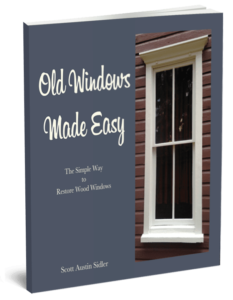 Old Windows Made Easy
Old Windows Made Easy
First things first: if you want a comprehensive guide for the restoration of your wood windows you need to get a copy of my book Old Windows Made Easy. This book is the absolute simplest way to restore your wood windows. In this guide, I walk you through the entire restoration process step-by-step so as to leave no stone unturned.
This book will save you hours and hours of working time and thousands of dollars in restoration costs. You can learn more about the book here or order your copy now!
Not ready for the book? Then check out the information below for free and you’ll learn how to restore old windows at the pace you want.
The Techniques
- How To: Reglaze Old Windows
- Which Glazing Putty is Right For You?
- How to: Glaze Wood Windows
- How To: Open Stuck Windows in 4 Easy Steps
- How To: Remove Window Sash
- How To: Restring Old Windows
- How To: Remove Paint From Old Hardware
- How To: Replace Broken Window Glass
- How To: Weatherstrip Wood Windows
- A Window Glazing Tip & Trick
- How To: Work With Spiral Balances
Old Window Tools & Supplies
My favorite putty for wood sash. Fast skinning and ready for paint within 1 week. This linseed oil based glazing putty is for in shop glazing only.
A slow curing (2-3 weeks) glazing putty ideal for on-site repairs and steel or wood sash. Immense flexibility and long life is the name of the game for this linseed oil-based glazing putty.
My favorite and still undefeated champion of epoxies in my honest opinion. This easy to use wood epoxy is great for making almost any kind of repair to wood windows. From minor filling of rot, to complete reconstruction of profiles, this combination of epoxy filler and consolidant does it all with style.
Sampson #8 Spot Cord is the ideal sash rope for wood windows. Able to support up to 150 lbs it will support any size window, and that’s why it has been the industry standard for over 100 years.
An easy to use tool great for cutting sashes free from years of built up paint and caulk to get them working again. Its serrated edges provide a great cutting edge that helps keep other surfaces free of damage.
With 2 sides this glazier’s tool can be useful for those learning to glaze. I use only the beveled edge after years, which I find has the perfect bevel for glazing my windows.
For paint stripping infrared heat is a great way to get the paint off without damaging the surface beneath. Lose decades of old paint easily in minutes with this tool and keep yourself safe from lead paint by eliminating dust.
Faster and smaller than the Original Speedheater, this new addition to the line up is great for the small parts on windows like muntins. Softens paint in only 2-3 seconds and overall makes your life easier.
Simple to use and provides great hold for glass in wood sash. This style works great with the Fletcher glazing point setting tool below. For simple hand setting of points, this is the best choice.
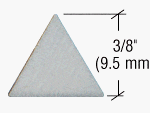
Point driving guns can be expensive, but with this easy hand tool, you can set multiple styles of glazing points with one affordable tool. Sure, it might take a little longer than a gun, but it gets the job done all the same.
Need more help? Don’t be shy, become a Patreon! Being a Patreon is about how I can give you better access to me, so we can work together on your personal home projects. Whether you just want to chip in a couple bucks to support my website or you want some one-on-one coaching Patron is the place for you.
Click the link and join the Craftsman Patreon family!

Founder & Editor-in-Chief
I love old houses, working with my hands, and teaching others the excitment of doing it yourself! Everything is teachable if you only give it the chance.



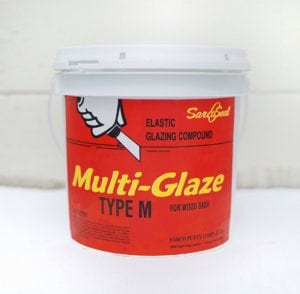
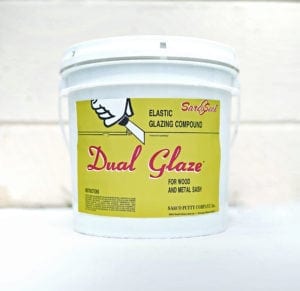
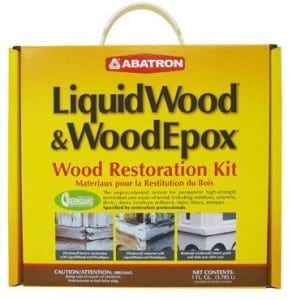
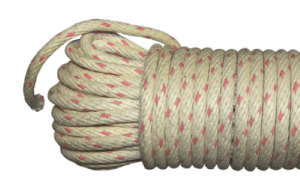
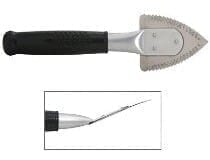
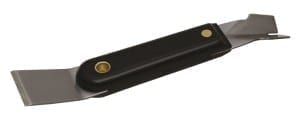

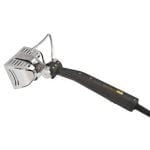

My wood window from 1970ish doesn’t align anymore to lock properly. Do I sand it down? There’s no debris in the crevices where it closes.
It’s hard to tell without seeing what the problem is.
Lorena, sometimes the windows misalign due to settling of the house or frame. The gap above my upper sash was due to settling. The sashes are square. The frame itself was not. This was fixed easily by drilling new pilot holes for the old spring bolts (spring bolts are horizontal bolts drilled through either side of a sash pulled toward each other to allow movement of the sash; when released they hold the sash in place by allowing the bolts to rest in holes drilled into the frame.)
Hi Scott,
I am in the process of reworking old wood double hung windows. So happy to find you. We have 3 kinds, spiral, weights, & duplex sash balances. Working on the duplex sash balance windows now. One of the larger windows was sagging, I purchased 8 # acme sash balances to match the original, the top still slid down a couple of inches. Then I tried 10#, the bottom sash raises up a few inches (vs staying where I leave it). The local ACE hardware expert gave me Adjustable sash balances to try. I am afraid of messing them up and don’t quite understand the instructions for releasing the tension. Do you have any handy hints? Should I just live with the 10# and shove down & lock the sash locks? or is there a way to use the #2 Adjustable sash balances to correct both sashes to stay where they are put!
AND thank you for the reference to diamond glazing points… I have looked everywhere for months!
Next will be working on the other two types. We even have some with the old wavy glass that never had the jambs clogged with paint! YUM
One other question: for french windows I have seen exterior copper weatherstripping… but can’t find it to purchase. Do you have a source for it (S. California)
Nancy, for the spring bronze weatherstripping try
http://kilianhardware.com/sprinbronwea.html
As for the sash balances I haven’t messed with the duplex balances ever, though I have seen them before. The adjustable sash balances (tube or spiral) might work well to solve this problem. I would think that the replacement duplex balance should be able to be tuned to match the weight of the sash though. In the end it may be more trouble then it’s worth to switch everything out. If it was my house I would probably just leave the #10 balance in and push the sash down to latch it for now until I did a more thorough restoration of that window.
Hi Scott,
Thanks for your reply, I will check out Kilan for the weatherstripping, and when I get back to finishing the windows, I will let you know which way I went.
Thanks again!
Hi Scott, thank you for this wonderful resource! I have some original wood casement windows in my 1919 craftsman home that do not close all the way and stick, making for a breezy and chilly winter. Would you be willing to create a tutorial on how to fix windows and doors with sagging frames (I’m assuming that is the cause of my issue)? Is there a preferred method for planing down the window/door or frame? I don’t want to embark on this task while still so ill-informed, as I very much wish to preserve the original features of this home intact.
Thank you again!
Madeline, thank you so much for the inspiration. You’re right that those kind of tutorials are definitely needed. I’m on it!
Scott, I have a c1800 Rhode Island home with single hung windows, the house is plank on frame construction and no room for window weights. What hardware could I use to keep the windows open besides a stick?
Bryan there are a lot of options for single hung windows. Some are specific to windows and others are up to your own creativity. Check out these options:
http://www.houseofantiquehardware.com/window-stop
The jamb liners in my old wooden windows (custom built in the mid-1970’s)are metal. There are no springs or pulleys employed to hold the double hung windows up (only friction does the job). I need to rebuild these windows because of exterior rot to the frames and sills. I have a pair of spare sashes. I would like to pre-build each window (one at a time as I go)so that I don’t have to temporarily cover each window with unsightly plywood, etc. So I need to find a source of double hung metal jamb liner (friction only) so that I can always be one window ahead. Do you know of any sources?
my contractor said he could restore my old wood windows. He led. Now they are worse. ALL of them leak water- some are so bad we have to mop it up when it rains and the sheetrock is mildewing. No drip edges on some, some sashes installed UPSIDE DOWN,improper window sills on some, buckets of caulk used-no real glazing, stops off, rattling, improper priming of stripped windows, the list goes on. Quoted $2700 a window to repair by local company. No way with 12 windows can that happen. And when I speak to places after researching windows, I quickly learn that they are NOT experts. Know anyone who does this work in New Orleans that you can recommend? Or you can have a house rent free for Mardi Gras that is 3/4 of a mile from the French Quarter for free in exchange for repairs! I mean it. For as many Mardi Gras as it takes! HELP! Julie
I removed an aluminum bay window 50″ x54″ to clean it and the one end of the glass slipped out of the frame. I found a place who will put it back in and repair the corner where it separated. How can I safely transport such a large piece of glass to avoid breaking it? It takes 2 people to carry it.It is 50 years old. Thank you
Anna, something that large will be tough unless you have a truck or large SUV you can lay it flat. It may be best to have friend help carry it as well. Bring a moving blanket to make sure it is padded during transport also.
P.S. Would it be okay to use door/window caulk (with or without silicone), putty, or epoxy to seal the aforementioned gaps? Thanks! Kim
Hi Scott, I have some multi light windows from 1922 that were poorly glazed, and as a result there are gaps between the glass and the mullions and rails inside. Condensation has caused some mildew in a few of them. I know the right thing to do would be to have a pro reglaze the panes, however most of the window is in really good shape, so I’m hoping you can advise on product to treat the mildew, and patch/seal the gaps to prevent further moisture intrusion. I don’t want to cause more harm than good. Thanks for your help! Kim
My home was hit by a tornado on Memorial Day. It was built in the 1900s. Some of my windows have rotten places and don’t close properly as well as 2 of my doors no longer closing properly. Looking for anyone in the Austin, TX area that works on old windows and doors. The only place I could find was Red River Restorations but he said he only does BIG JOBS. Any help in finding someone would be appreciated more than you can imagine. I’ve been dealing with all this for 5 months now with no end in site.
Actually, I usually take a trip to Dallas and Austin around the new year and one of my carpenters is moving to the Austin area in the next month or so. If you can wait and follow up with me after the first of December I may be able to have someone in your area who can help you get those windows and doors restored.
Inwouldmlike the contact information of the man who is moving to Austin, also.
Scott,
Two things. One, I’m not sure priming the area where the glazing sits will allow the window to be repaired in the future. Priming can dry out but leave the wood impenetrable. I believe soaking the mullion in boiled linseed oil might be a better method. Your thoughts please
Can I use an exterior high-quality latex paint to cover the glazing? Thanks! I’ve always oil-primed then used oil top paint.
Eric, the best practice will likely depend on you climate. In Florida anytime we use oil based paints or boiled linseed oil outside we end up with mildew so I avoid it. And you can definitely use latex over top of the glazing putty.
Hi Scott-
We have 8/12 DL DH sash in our circa 1825 home. The 8/12 sash are thought to be circa 1900 replacements. The 8/12 arrangement is not customary for our region, so we are considering inverting the sash to be 12/8. To do so, we will have to adjust the parting bead on the meeting rail, which is doable. By inverting though, the upper sash will have an interior milled profile at the edge of the glass on all sides, including where the window lock would typically be placed. The flat interior surface where the locks would have been placed previously will now be oriented down beneath the top rail of the now bottom sash. We’re unlikely to install locks on the rail, so this change in the interior profiles is not an issue for that reason. But we’re wondering if it is a faux pas to do this. Any experiences along these lines, or do you know others who have done so? Thanks, Mike
Mike, I admire your zeal to get back to what may have been the original pattern for the windows. I would advise against it though. The main reason I wouldn’t do it is because there are too many alterations necessary and too many differences between how a bottom sash and top sash are built to make them work effectively or look just right. Little things like the perfectly matched meeting rail, the slightly larger and beveled bottom rail of the bottom sash and so many other little things. I think the 8/12 arrangement, though not original to the house, is still over 100 years old and a part of the home’s history. Who knows there may be a good reason or story behind the unique pattern!
What about spring.My Windows mechanism is spring activated left and right, upper and lower sash. I can’t get them to Work after I remove for repair.
Which type of spring balance do you have?
In my case was removal of metal track.Once removed I was able to get the sash out and the springs found attached to the sash. The spring is a twisted metal bend inside a metal tubing allowing to move the window up and down .Everything else you describe is true ,people who own the house painted everything ,heavy paint coulnd’t move the windows. Thank you for support.
Question about sash cord. Good sash cord is pricey, and wont last. Sash chain is very expensive, but will last. What alternatives have been used with success? I’m thinking along the lines of metal braided wire that you can buy by the foot (similar to bicycle brake cables). Aesthetics and problems with attaching the sash and weights aside, why not use this cheaper, long lasting alternative when replacing sash cord??
Thanks!
Chris, there are a couple options. You can buy the cheap sash cord at Ace Hardware (or similar) that will last about 15-20 years with moderate use. Or you can buy something like Samson Spot Cord (which is made for window sash) that will last 50-60 years with moderate use. Lastly, you can use chain which will last almost indefinitely if cared for. Personally, I prefer Samson because the price is not bad and it will last longer than I’ll be around (and I’m still relatively young!) I’d stick with the tried and true methods.
Sash pulleys that were made for rope, or cord have a radiused groove. The pulley wheels made for chain have a flat groove. To see what I mean, see photo http://www.theharwick.com/MULTIPULLEY.html.pdf.
Stick with quality rope, or replace the pulleys too.
Stripping thick paint & glazing is easiest when sashes are removed & put on a table not hung in place. The Speedheater INFRARED (not uv) paint remover low heats them for easy scraping.
Yes, infrared light is what you want. Uv paint strippers aren’t even a thing (besides the sun + time)
Removing the sash is good advice. Do it from indoors. Just remove the stop (by careful prying) and you’re off to the races. I use a razor to cut along the edge of the stop because the thick layers of paint can hamper your prying.
Historic wood windows are soooo pretty. They make you feel cozy. You feel like you live 50 years ago.I love them.Greetings!
I start working to restore my windows, paint,reglazing,there are double hung, but I have encounter difficulty to remove any of the sashes.Fabricated by Rusco,Cleveland Ohio,Russell Co. Pat. 2262670.Is any way I can find out how to take it apart.?thank you.
Most of the time the muntins are held together by the sash frame. Take the frame apart, and the muntins are just loose sticks. What are the frame joints like? Also, if there are just too many layers of paint, you might consider borrowing a uv stripper and going to town on the sash before disassembling it.
Who can I find to repair leaking windows? Where do I start? The few folks I have called in the Nashville, TN area seem afraid to work on them. They are only 12 years old.
Any help would be appreciated.
Terry Love
Terry, new windows are not always easy to repair in place. They are mostly designed to be installed and then replaced when something breaks or they wear out. If your windows are historic replicas then I might know someone otherwise probably calling the manufacturer is the best way to go.
I have a sunroom with 7 large, old fashioned awning windows. Each window is almost 4 feet by 5 feet. Two of the windows have missing pieces that operate the windows. Is there a sight that show how to rebuild these?